For yesterday’s post with tips for making homemade ravioli I needed some photos, and prepared a filling with duck and orange. First I braised duck legs in orange juice with the ‘holy trinity’ of onion, carrot, and celery as well as thyme, sage, and rosemary. Then I used the meat of the duck legs for the filling, together with orange zest and the pan juices to enrich the filling. I used the remaining pan juices to dress the ravioli. The result was wonderful and definitely something to add my ever growing ravioli repertoire. The combination of duck and orange is well known, and also in this preparation it definitely works. Here’s what I did…
Ingredients
For about 40 ravioli, 4-8 servings as primo piatto
500 grams (1.1 lbs) duck legs
60 ml (1/4 cup) Grand Marnier
juice of 2 oranges (about 200 ml, 5/6 cup)
zest of 1 orange
50 grams (1.8 oz) freshly grated parmigiano reggiano + more for serving
50 grams chopped carrot (1/2 cup)
50 grams chopped celery (1/2 cup)
75 grams chopped onion (3/4 cup)
6 fresh sage leaves
1 sprig fresh rosemary
4 sprigs fresh thyme + 1/2 Tbsp fresh thyme leaves
1 egg
salt and freshly ground black pepper
For the pasta dough
2 eggs
200 grams (1 1/3 cup) Italian 00 flour
Preparation
Wash the duck legs and pat them dry with paper towels.
Trim excessive fat from the duck legs.
Season the duck legs on all sides with salt and freshly ground black pepper.
Render the fat from the trimmings and brown the duck legs in the duck fat.
Brown them on both sides, then set the duck legs aside.
Pour off some of the duck fat if needed until you only have about 60 ml (1/4 cup) left, and reserve it for another use such as roasting potatoes.
Sauté the onion, celery, and carrot in the duck fat over medium heat.
Meanwhile, squeeze the orange (remembering to zest 1 first, as it is difficult to zest a juiced orange).
After 10 minutes the vegetables should be golden; do not let them brown too much.
Deglaze the pan with the Grand Marnier.
Scrape with a wooden spatula to get all the browned bits into the sauce.
Add the orange juice…
…and bring to a boil. Then lower the heat to a simmer.
Add the duck legs including the juices that leaked out of them. We don’t want to waste any flavor!
Add the thyme sprigs, sage, and rosemary to the sauce. Season slightly with salt.
Partially cover the pan and allow to simmer for at least an hour or until the meat is tender.
Turn the legs every 15 minutes or so, arranging some of the aromatics on top.
Test with a fork whether the meat is cooked. You could simmer them until they fall off the bone if you have the time, but that is not strictly necessary as the meat will be finely chopped anyway.
Allow the duck legs to cool off a little so you can handle them, then take the meat off the bones (this is easiest if you have simmered the duck legs until the meat falls off, obviously), including the skin. Reserve the bones.
Beat the egg in a food processor.
Add the duck meat and chop.
Add the parmigiano and process to incorporate.
Sieve the pan juices.
Add about 60 ml (4 Tbsp) of the pan juices to the meat…
…as well as the orange zest.
Process to incorporate. Now taste and adjust the seasoning with salt and freshly ground black pepper, remembering to slightly over-season the stuffing. (If you are worried about tasting the stuffing as it has raw egg in it, cook it briefly in a microwave or in a non-stick pan until cooked through before tasting.) Once the stuffing is to your liking, transfer it to a bowl, cover with plastic wrap, and refrigerate for a couple of hours to firm up.
Meanwhile, make pasta dough from the eggs and flour, wrap it in plastic wrap, and allow to rest for half an hour.
Return the remaining juices to the pan together with the bones and the aromatics that were sieved out of the juices. Add 250 ml (1 cup) of water, bring to a boil, and reduce to very low heat. Continue to simmer this until there is about 125 ml (1/2 cup) of juices left, then sieve the juices again.
Taste and adjust the seasoning of the juices (the sauce for the ravioli) with salt and freshly ground black pepper.
When the pasta dough has rested and the filling has firmed up, roll out the pasta dough and make ravioli.
Bring a large pot of water to a boil. Reheat the juices.
Add salt and the ravioli.
Cook them for 1-2 minutes, then remove them quickly with a slotted spoon…
…and add them to the juices.
When you have added all of the ravioli, toss them gently to coat them with the juices.
Serve the ravioli on preheated plates. Spoon over any remaining juices, and sprinkle with fresh thyme leaves and freshly grated parmigiano.
Wine pairing
This is great with a full-bodied dry German Riesling such as a Spätlese or Auslese, but make sure it is dry. (Click here to find out how to tell whether a Germany Riesling is dry or not.)
The acidity of the Riesling works well with the orange, and the creaminess of a full-bodied Spätlese/Auslese works well with the meat.
Flashback
This post from two years ago reminds me that it is about time to make pot stickers again, as I remember these were very tasty indeed.







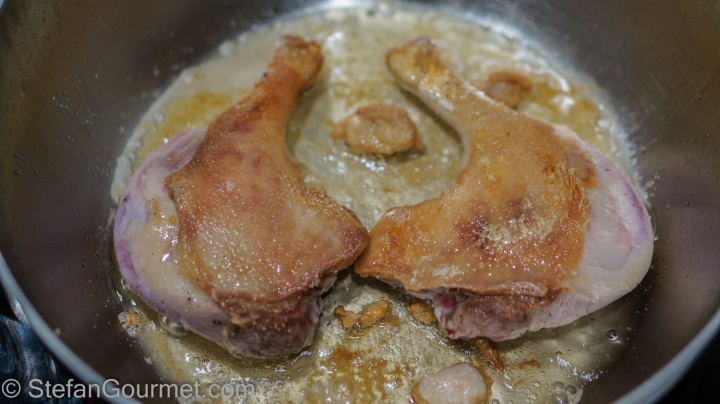
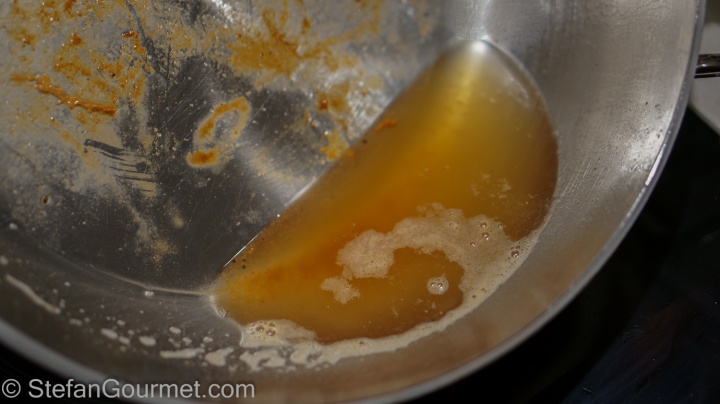


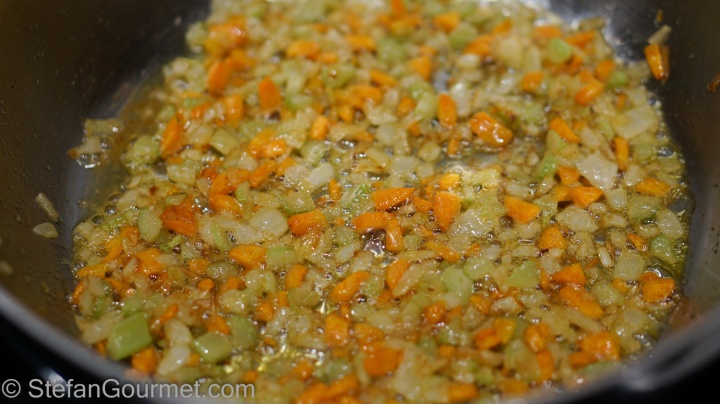
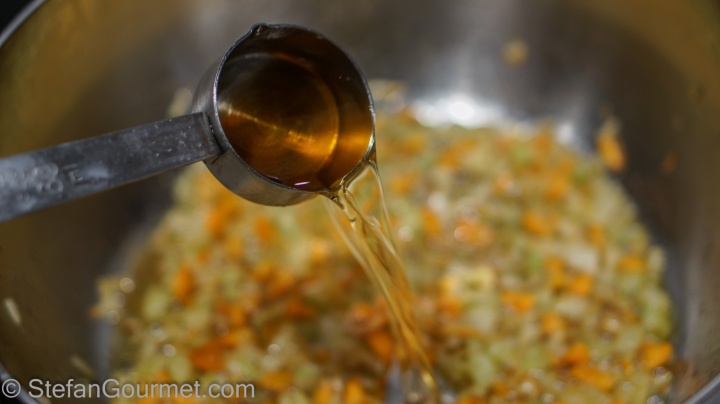

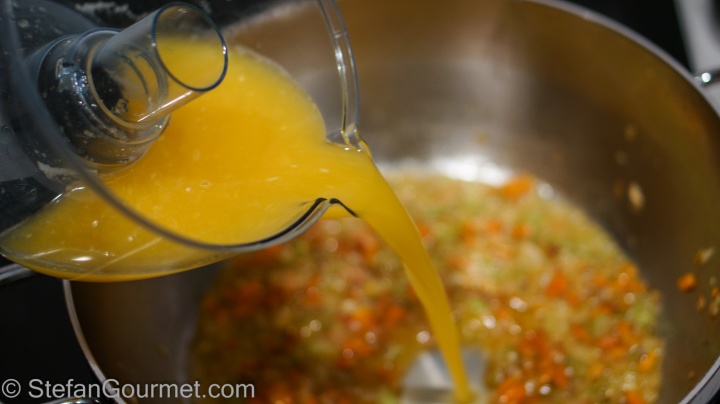


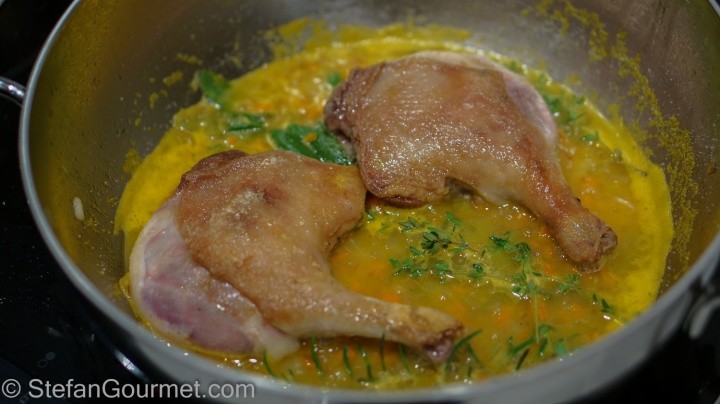

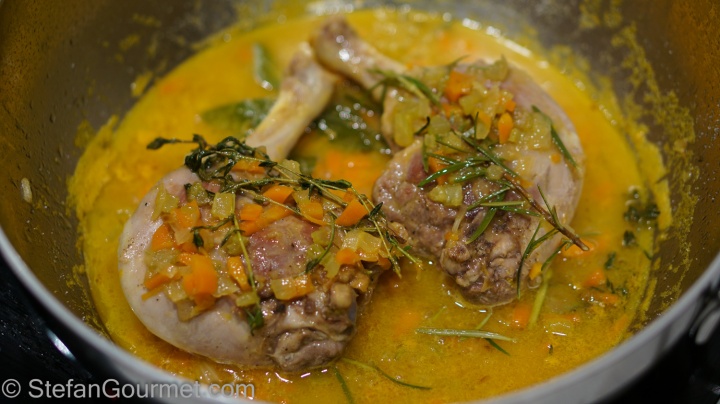

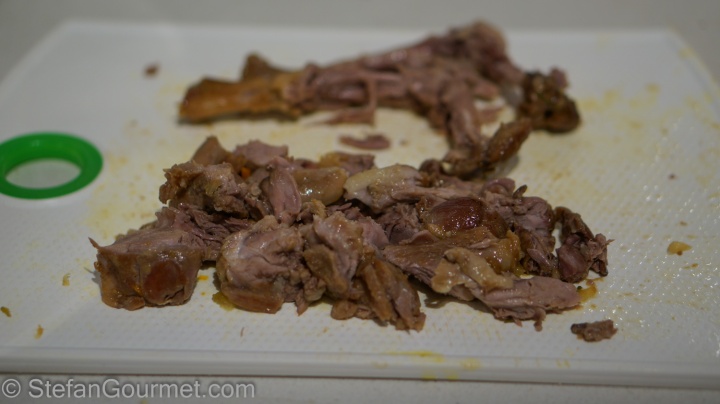

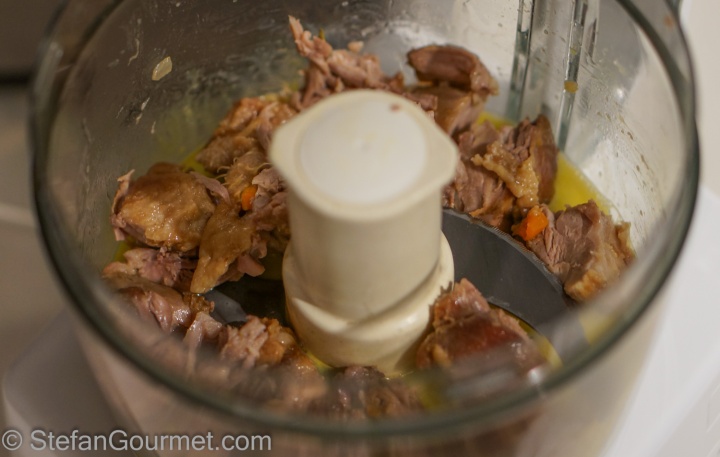
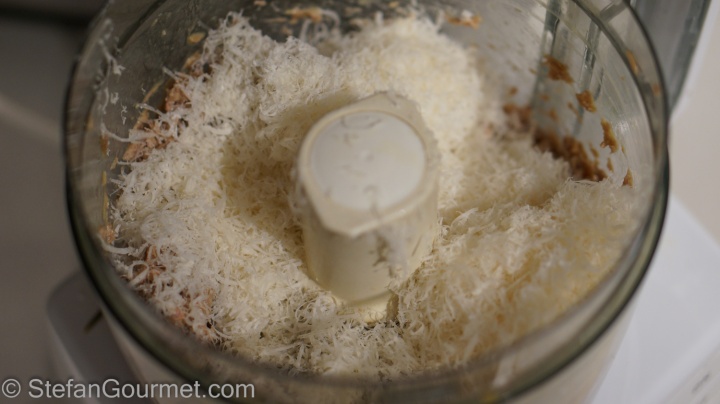
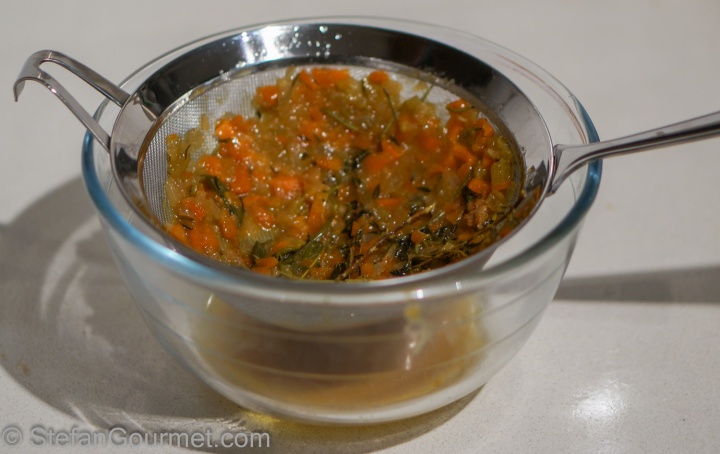
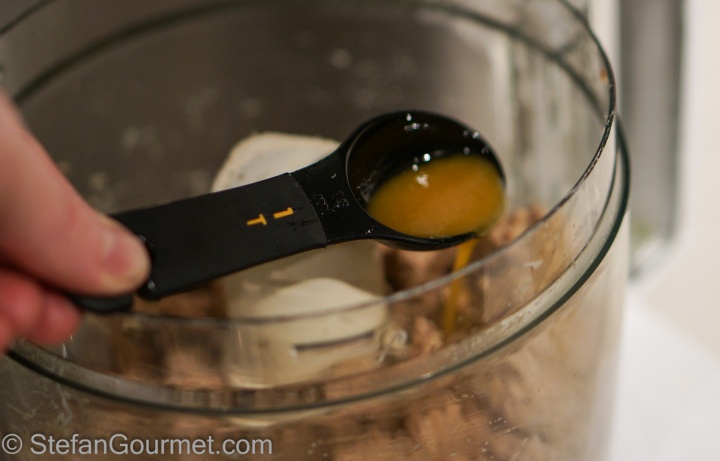

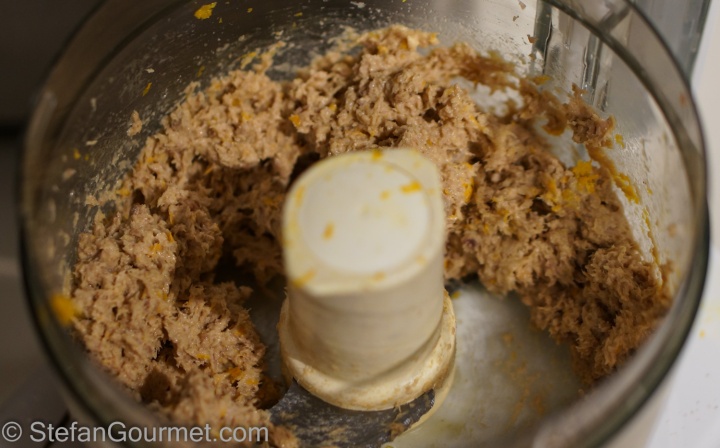
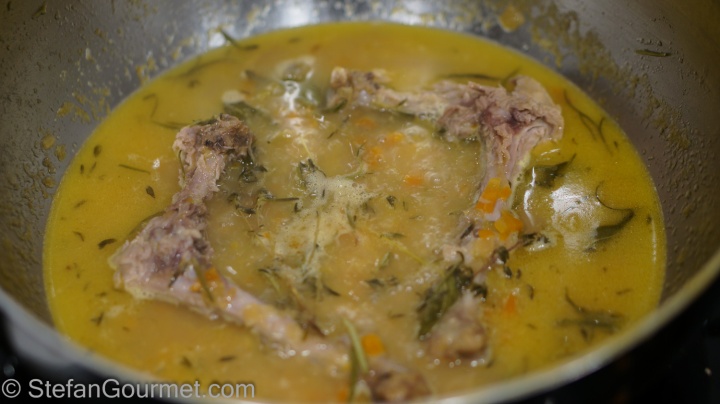




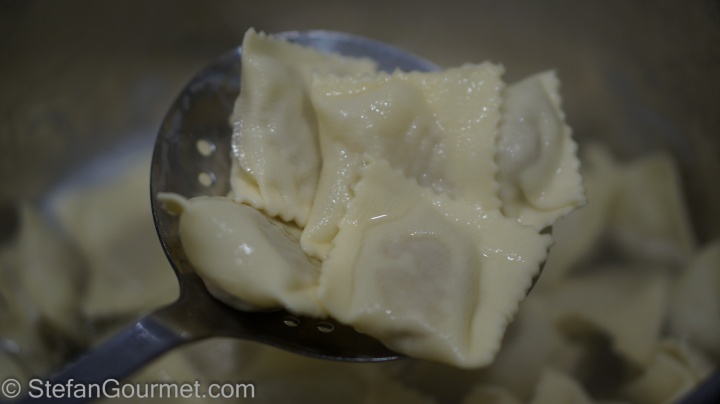
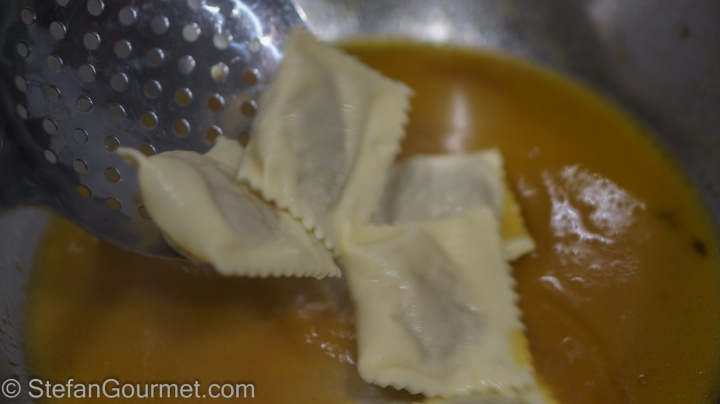




Duck à l’orange is a real French classic, and often served on Christmas tables. I love how you transformed it into decadently delicious ravioli, and I have no doubts it was delicious. Happy holidays!
LikeLiked by 1 person
The step by step pictures are inspiring. Great post.
LikeLiked by 1 person
Great Recipe … Gives me lots of ideas but we haven’t seen a dick or a goose here for ages an ages (and my wife really wanted duck for Christmas). BTW, you didn’t really ‘discard’ the duck fat did you?
LikeLike
Thanks! I added a comment suggesting to reserve the duck fat for another use.
LikeLike
Very creative Stefan. I really like it.
LikeLiked by 1 person
I’m sure that was delicious!
LikeLiked by 1 person
A wonderful recipe, Stefan. I was very pleasantly surprised by how much we enjoyed our roast duck ravioli. I’m sure yours would be at least as tasty. Love ow you reserve and use the pan juices throughout the recipe. And yes, save the duck fat!!! Oddly enough, duck breasts are becoming far more available in our markets. I had difficulty finding them just last year but, now, they can be bought in just about every grocery that I frequent. Recipe possibilities abound!
LikeLike
Your recipe, although a different take on duck ravioli, was what inspired me to prepare this.
LikeLike
Looks delicious, Stefan!
Would it be worthwhile to make it sous-vide? Or there’d be no real benefit and I should stick to simmering the duck in a pan?
LikeLike